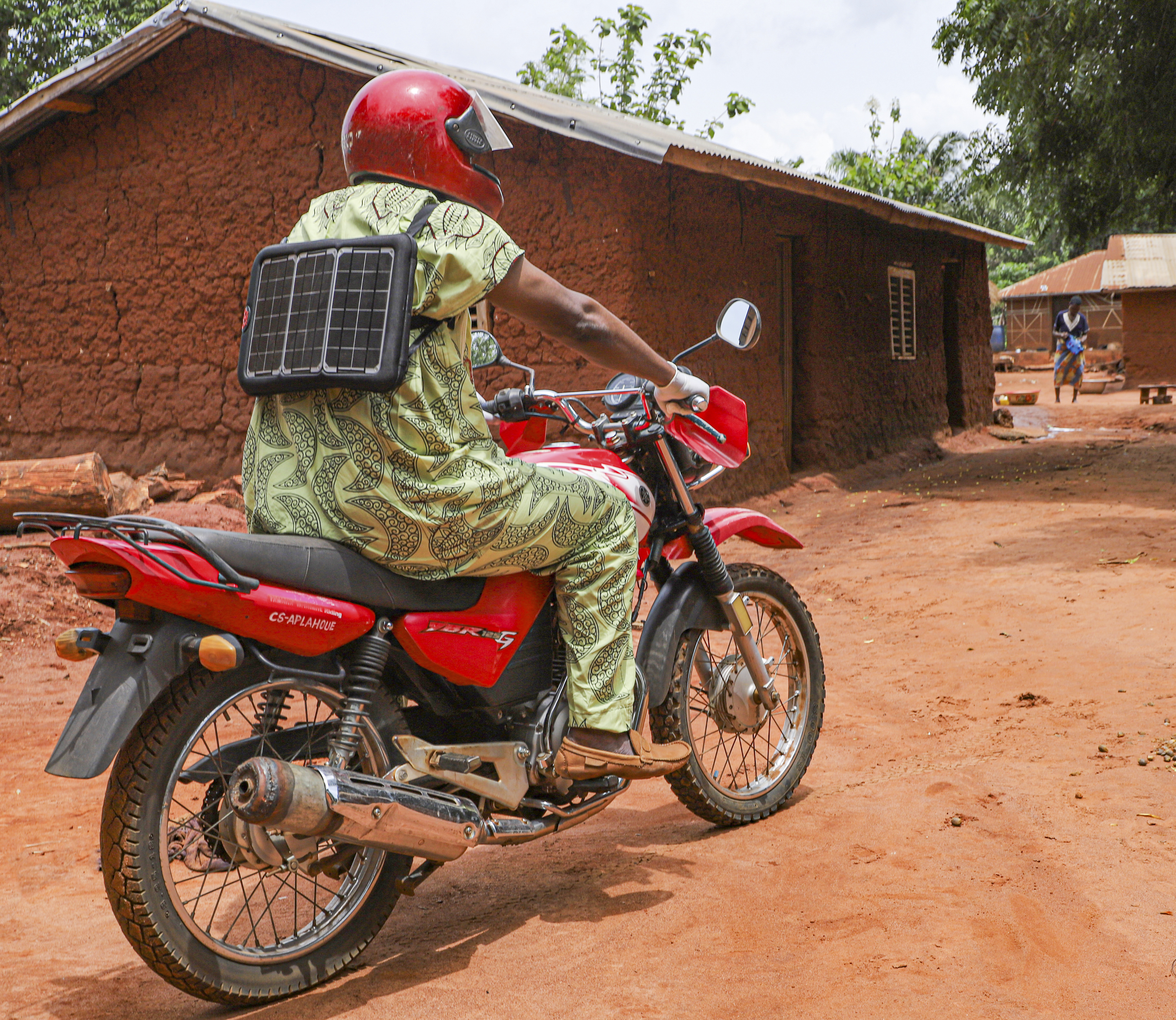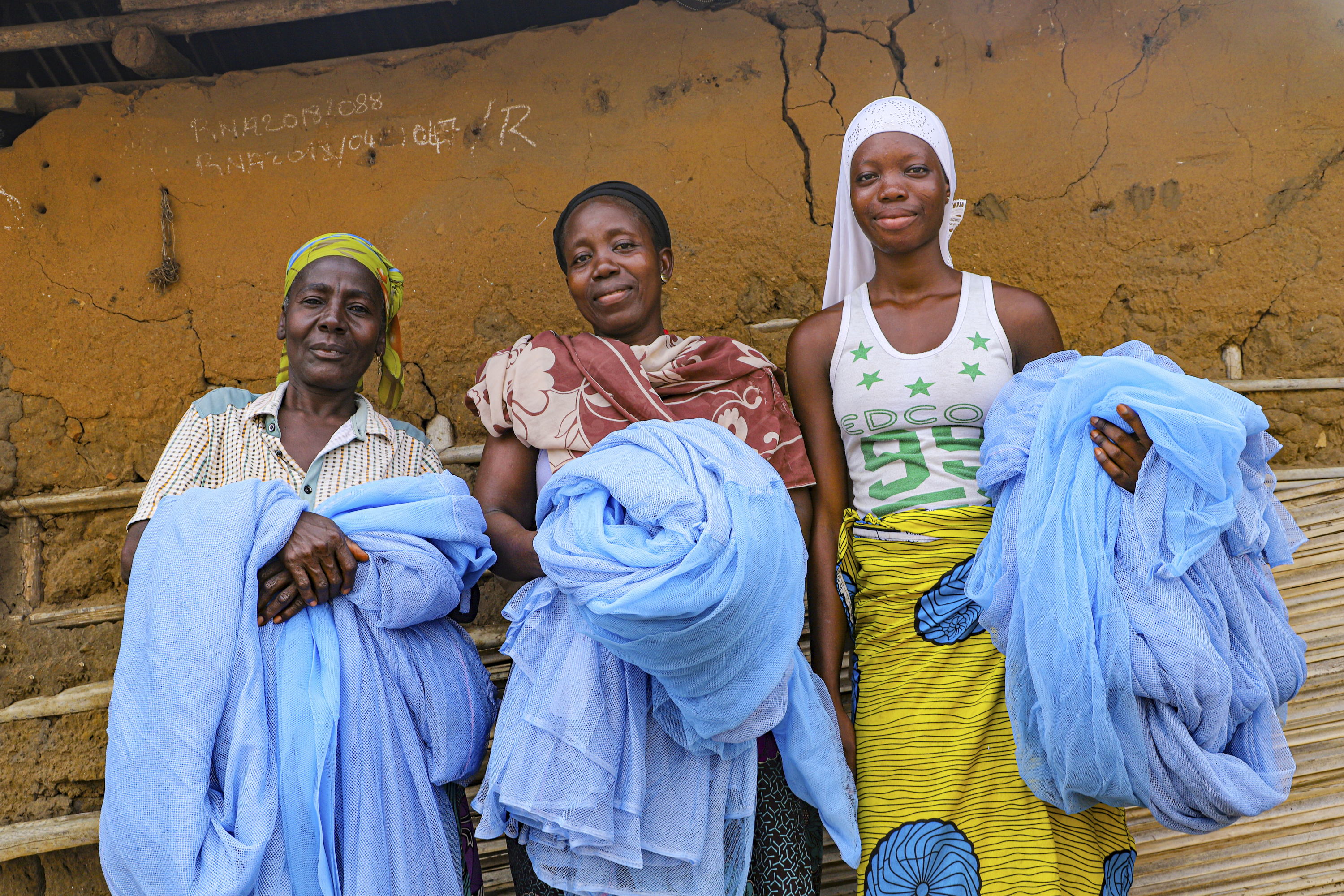The COVID-19 pandemic threatens to erode the impacts of large-scale public health programs because limitations on mobility and interactions can impede the provision of vital health services. These services are crucial to treat and prevent malaria in countries like Benin where malaria is the leading cause of mortality among children under 5 and the leading cause of illness among adults (CDC 2019). Last year, malaria caused 14.25% (13,264) of total deaths in Benin with incidences of malaria surpassing 4.9 million cases, which is little to no different than in 2018 (IHME 2019).
In Benin, rapidly identifying and applying process adaptations at scale enabled malaria prevention activities to reach over 13.5 million people safely since the start of the pandemic. Part of this work includes the distribution of Insecticide-Treated Nets (ITNs), which form a protective barrier around people sleeping under them. Bed nets treated with an insecticide are much more protective than untreated nets because the insecticides kill mosquitos that transmit malaria, as well as other insects. If enough ITNs are distributed within a community, the number of mosquitos and their lifespan are reduced, leading to fewer malaria cases. Catholic Relief Services (CRS) worked with the National Malaria Control Program (NMCP) in Benin to digitize a mass distribution campaign of ITNs, while maintaining physical distancing and other COVID-19 preventive measures.
In late December 2019, CRS and its partners piloted a program to distribute 553,809 ITNs to 994,903 people in one health zone of Benin. After the pilot, they launched a nationwide ITN campaign over 16 days, including 6,350 staffers who reached more than 13.5 million people living in 3,474,545 households. The campaign enumerated the general population, distributed vouchers for ITNs door-to-door and each household exchanged their voucher for ITNs during a subsequent visit by the distribution agents. A campaign using this method had not been tested before.

A community supervisor conducts management activities with solar chargers and power banks in remote communities without electricity to support field agents by charging their mobile phones.
One of the improvements made after the pilot program was the utilization of geographic information systems (GIS), which was called the Benin Digitization Project. U.S. space and intelligence company Maxar provided high-resolution satellite imagery of Benin to map all of the households in Benin. CRS’ data and geospatial analysts set up a geographic coverage dashboard using the data from Maxar to enable the tracking of voucher distribution and redemption coverage rates by field agents, NMCP National, Department and community supervisors. The team also developed an ArcGIS model for identifying households who did not receive or redeem the voucher for ITNs. The field monitoring teams used the model’s outputs plus Explorer for ArcGIS to visit households in areas with high counts of non-registered households to ensure they would receive their ITNs and prevent the spread of malaria.
Together, the platform and the model measured coverage rates in each region of Benin. The team ran the coverage model daily and published the results to an ArcGIS operations dashboard to allow for broad visibility into progress on the campaign. You can see for yourself by visiting the publicly available dashboard here!

A mother stands with her children after receiving mosquito nets as part of the nation's first digitized mosquito net distribution since the COVID-19 outbreak began in Cotonou, Benin on April 20, 2020.
The COVID-19 global pandemic affected the way ITN distributions occur. Previously, CRS worked with the NMCP to distribute ITNs from a fixed post, such as in city centers like Parakou, Copargo, Djougo, Ouidah, Tori-Bossito. By switching the approach to specifically visiting households that had not yet received their ITNs, it limited everyone’s in-person contact to simply what was necessary, thereby reducing the spread of COVID-19.
The digital mapping dashboard and platform enabled NMCP local managers to remotely supervise ITN distributions and host virtual daily review meetings to troubleshoot problems. The satellite imagery in Benin enabled the program to pinpoint which households have or have not received their ITNs, allowing for more focused in-person efforts. With geographic data, CRS’ simple, user-friendly dashboard enabled Benin Ministry of Health supervisors and other stakeholders to easily track distribution and ensure universal coverage.

A woman (center) stands with her mother and daughter after receiving mosquito nets as part of the nation's first digitized mosquito net distribution since the COVID-19 outbreak began in Cotonou, Benin on April 20, 2020.
The ITN distribution campaign, which lasted for a period of 16 days (April 14-29, 2020), was successfully completed and the following results were achieved:
- 7,652,166 ITNs were distributed to 13,581,637 people in 3,041,424 households to achieve an ITN redemption rate of 94%.
- Over 25,000 campaign personnel were trained on the use of the mobile devices and other digital tools and deployed under COVID-19 precautionary measures to execute ITN distributions.
- Participation of field agents in trainings, household enumeration and ITN distribution activities were digitally tracked as each staff was provide a unique identity in the form of a QR code used for presence validation during these activities. Digital time sheets were produced to facilitate easy payments of staff and accountability in human resource management.
- A rich population database that contains name, age, sex, and nationality of the entire inhabitants of the country.
- Automated messages (SMS and voice) were sent to households to reinforce malaria prevention messages and explain how to hang, use, and care for the ITNs.
Photo Credit:
Hugues Ahounou, CRS, Benin 2020